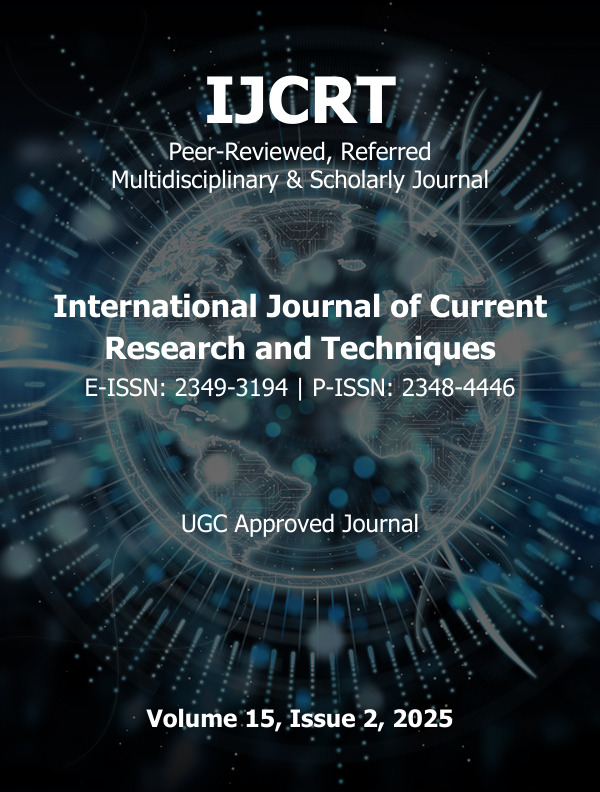Published 2025-06-23
Keywords
- Tariffs,
- Trade,
- Barriers,
- Growth Rate,
- Tariffs and Polity
How to Cite
Copyright (c) 2025 IJCRT Research Journal | UGC Approved and UGC Care Journal | Scopus Indexed Journal Norms

This work is licensed under a Creative Commons Attribution 4.0 International License.
Abstract
This comprehensive study investigates the multifaceted economic impacts of contemporary tariff policies, with a particular focus on the transformative period around 2025. The primary objective is to understand how strategic tariff implementations influence international trade relationships, domestic economic indicators, and global market dynamics across nine major trading partners: China, the European Union, Canada, Mexico, India, South Korea, Japan, Turkey, and Brazil. Employing a multi-methodological approach, the research integrates Difference-in-Differences (DiD), Synthetic Control methods, and Panel Vector Autoregression (PVAR) to analyze both immediate and long-term effects of tariff adjustments.
The methodology leverages extensive datasets from sources such as the World Bank, UN Comtrade, WTO Tariff Analysis Online, and national statistical agencies, covering macroeconomic variables (GDP, trade balances, employment, inflation) and sector-specific outputs. The DiD approach isolates causal effects by comparing treated and control groups before and after tariff implementation, while synthetic control constructs counterfactual scenarios to validate findings. PVAR models capture dynamic interdependencies among macroeconomic variables, revealing feedback loops and temporal responses to tariff shocks. Additional robustness checks, including instrumental variable techniques and sensitivity analyses, strengthen the causal inferences.
Empirical results demonstrate that tariff policies exert significant heterogeneity across sectors and trading partners. While certain domestic industries temporarily benefit from protective tariffs, the broader effects include substantial ripple impacts on global supply chains, trade volumes, and macroeconomic stability. Notably, tariffs introduced in 2025 led to immediate declines in bilateral trade flows and sectoral outputs, with persistent effects observed in manufacturing and investment indicators. The analysis also highlights the strategic interplay between tariffs and political objectives, emphasizing the importance of policy transparency and coordination.
The findings carry critical policy implications, underscoring the need for integrated trade strategies that balance short-term protection with long-term economic resilience. The research advocates for transparent communication of tariff policies and comprehensive impact assessments to mitigate adverse ripple effects. Future research avenues include extending the temporal scope to examine long-term structural adjustments, incorporating firm-level data, and exploring emerging sectors such as digital trade. Overall, this study advances understanding of the complex, interconnected consequences of tariff policies in an increasingly globalized economy.

